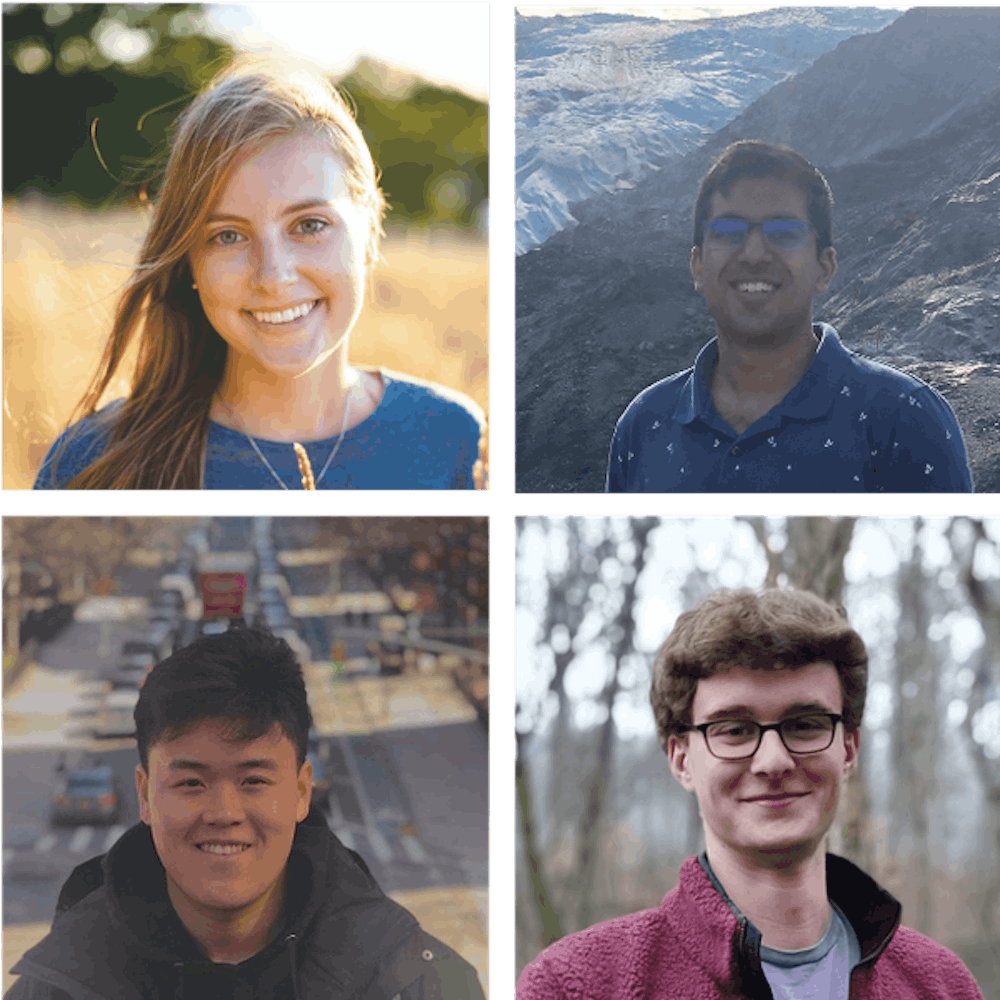Four University computer science students were recognized during the selection process of the 2021 Outstanding Undergraduate Researcher Awards. Nishanth Kumar ’21 was selected as one of 23 finalists, and Sarah Bawabe ’21, Dylan Sam ’21 and Homer Walke ’21 were acknowledged as honorable mentions.
The award, given by the Computing Research Association, “recognizes students with outstanding research potential,” according to CRA’s website. The CRA is a group of more than 200 organizations with the mission of advancing education in computing. The winners of the award are each nominated for consideration based on their work and research studies, typically by their research mentors.
Each of the University students who were recognized researched different aspects of computers, from computer engineering to artificial intelligence.
Bawabe, who conducted research with Associate Professor of Computer Science Jeff Huang,, aimed to develop an interface that improves grading techniques for CSCI 1300: “User Interfaces and User Experience,” which is taught by Huang. Initially, Bawabe was interested in physics, but her interest in computer science grew after taking CSCI 0150: “Introduction to Object-Oriented Programming and Computer Science” and Huang’s course.
As a student, Bawabe said she felt that the grading system in the UI/UX class was subjective. She worked last summer on a comparison-based interface to make grading more objective. “One of the main goals of the class is to determine how well-designed user interfaces are … but that’s really subjective and a lot of students were complaining that grading felt random,” Bawabe said.
Bawabe added that she enjoyed collaborating with mentors and classmates about “what the platform could look like.” For her, the most difficult portion of creating the interface was debugging it once it went online this fall.
Walke studies computer science theory and artificial intelligence. After taking CSCI 1410: “Artificial Intelligence,” he became interested in reinforcement learning.
In Professor of Computer Science Michael Littman’s lab, Walke worked on developing a model that works without labeled data.
“You might give a robot a specific formula and then that robot could use that logic to perform the task. The guiding question I explored with Michael was, given a demonstration from a human teacher, how can we derive a formula that described those demonstrations?” Walke said.
Walke said he found it satisfying to work on a project for a long time and then see significant results. In the course of his research, he also collaborated with Associate Professor of Computer Science Daniel Ritchie.
Sam studied AI at Brown after he became interested in the subject while taking CSCI 1420: “Machine Learning.” He was initially interested in chemistry, he said, but found that he “liked the computational side more than the chemistry side.”
Given his interest in computer science, Sam joined Assistant Professor of Computer Science Stephen Bach’s lab, and studied weakly-supervised machine learning. His research examines using unlabeled data on large data sets that require many parameters, adding that he enjoys “finding explanations for why machine learning worked so well.”
Kumar, a finalist, is the only nominee from Brown who concentrated in computer engineering rather than computer science. He is conducting research on the intersection between robotics and artificial intelligence.
Kumar said he was fascinated by computer engineering after joining his robotics team in high school, and he decided to attend Brown for its robotics research program.
“I saw the robot lab on the first floor (of the CIT), and I wanted to learn what they were doing in there and see if I (could) get involved,” he said.
Kumar has researched robot and human collaboration, working on developing self-driving cars during an internship with Uber. Kumar found that the joint nature between robotics and AI was helpful and necessary for his research.
And while he added that he found it difficult to work on a project for up to a year and get almost no significant findings, he was excited “to do something and figure out something that no one has done before,” he said.
Correction: A previous version of this article and this article's summary deck misspelled Homer Walke's name. The Herald regrets the error.

ADVERTISEMENT




